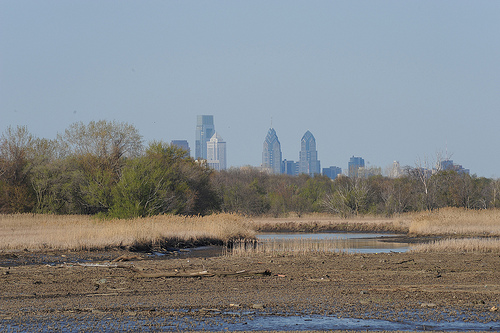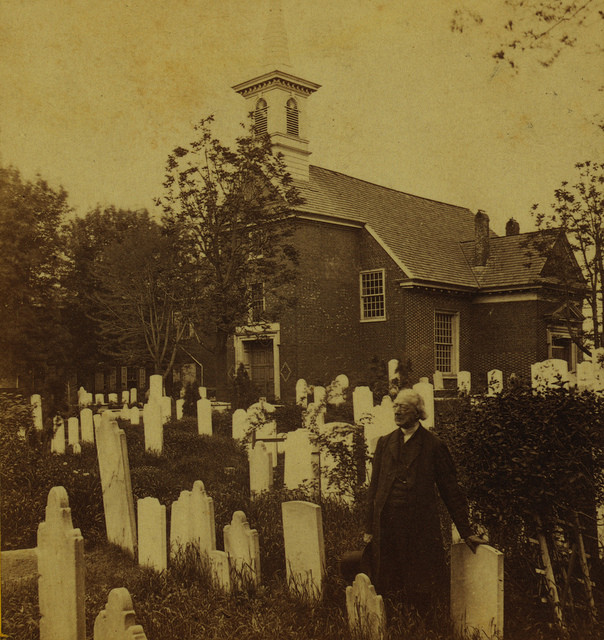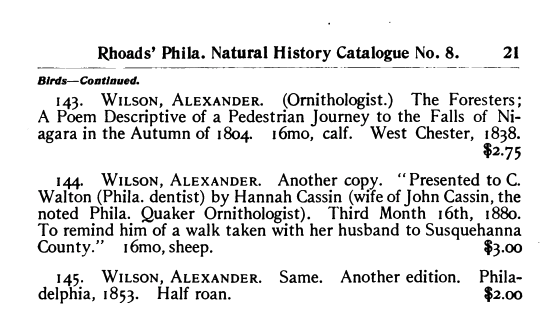Philadelphia is a big city, larger than any other conurbation on the East Coast than New York, and I’ve never managed to create the sort of mental map required to make me feel genuinely at home on our infrequent visits.

I’m trying.
And I’ve always found that one of the best ways to figure a place out is to select a figure, an event, or an institution and trace it through time and space. For the birder, the obvious choice is the work of Alexander Wilson, the 200th anniversary of whose death we’ll be celebrating in August.

So far, our desultory explorations have had me sniffing out the Wilson specimens that survive in the Academy of Natural Sciences, running across surprise encounters between Wilson and other famous Americans, and watching with caught breath as Wilson risks drowning for an oystercatcher specimen.
But this is one of the weirdest things yet.
Samuel Rhoads listed in his 1908-1909 catalogue of natural history books three copies of Wilson’s poem “The Foresters.” One of them, for which Rhoads demanded the princely sum of $3.00, was a presentation copy, given to a Philadelphia dentist, C. Walton, in March 1880 by Hannah Wright Cassin, the widow of none other than John Cassin, one of the shining lights of nineteenth century ornithology in Philadelphia and anywhere else.

Mrs. Cassin made the gift in memory of a walk along the Susquehannah taken, years before, by her husband and his friend. By choosing precisely this work of Wilson’s — subtitled by the author a “Description of a Pedestrian Journey to the Falls of Niagara” — she made explicit the line of intellectual descent from Wilson, the Father of American Ornithology, to Cassin, the equivalent great of his generation (Cassin was born two weeks after Wilson’s death in 1813). The book eventually made its way into the possession of Rhoads, the Haddonfield collector, ornithologist, and bibliophile book dealer — himself one of the founders of the DVOC.

I don’t know where the book is today, but I hope it sits, cared for and appreciated, on a shelf somewhere, still bearing witness a century and a quarter later to the way that ornithological knowledge used to be passed down through the generations, in Philadelphia and wherever birders gathered.

